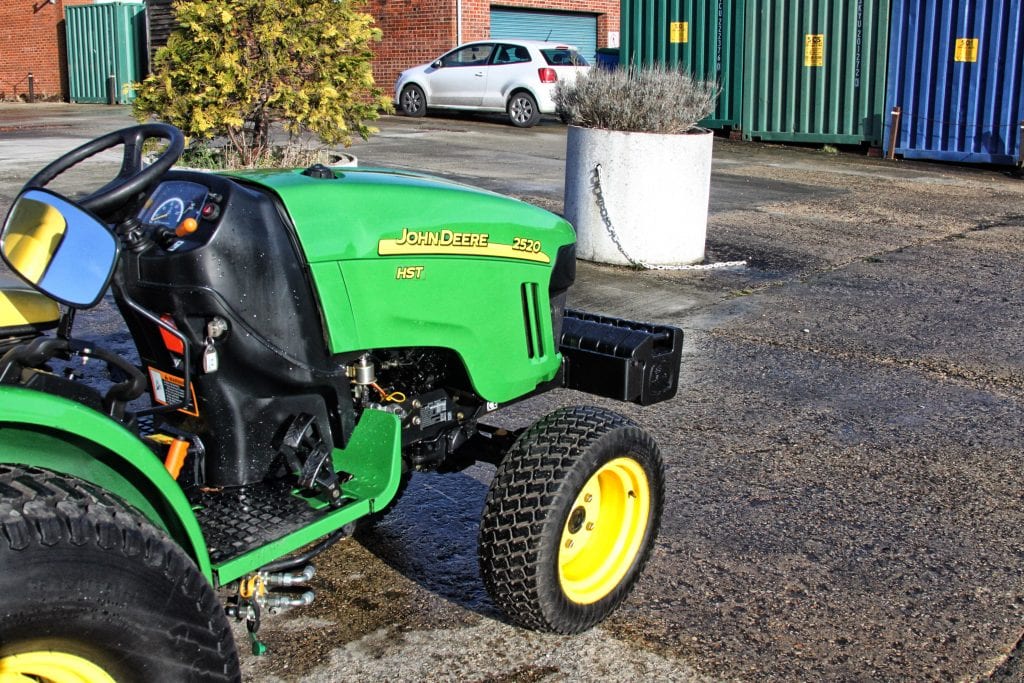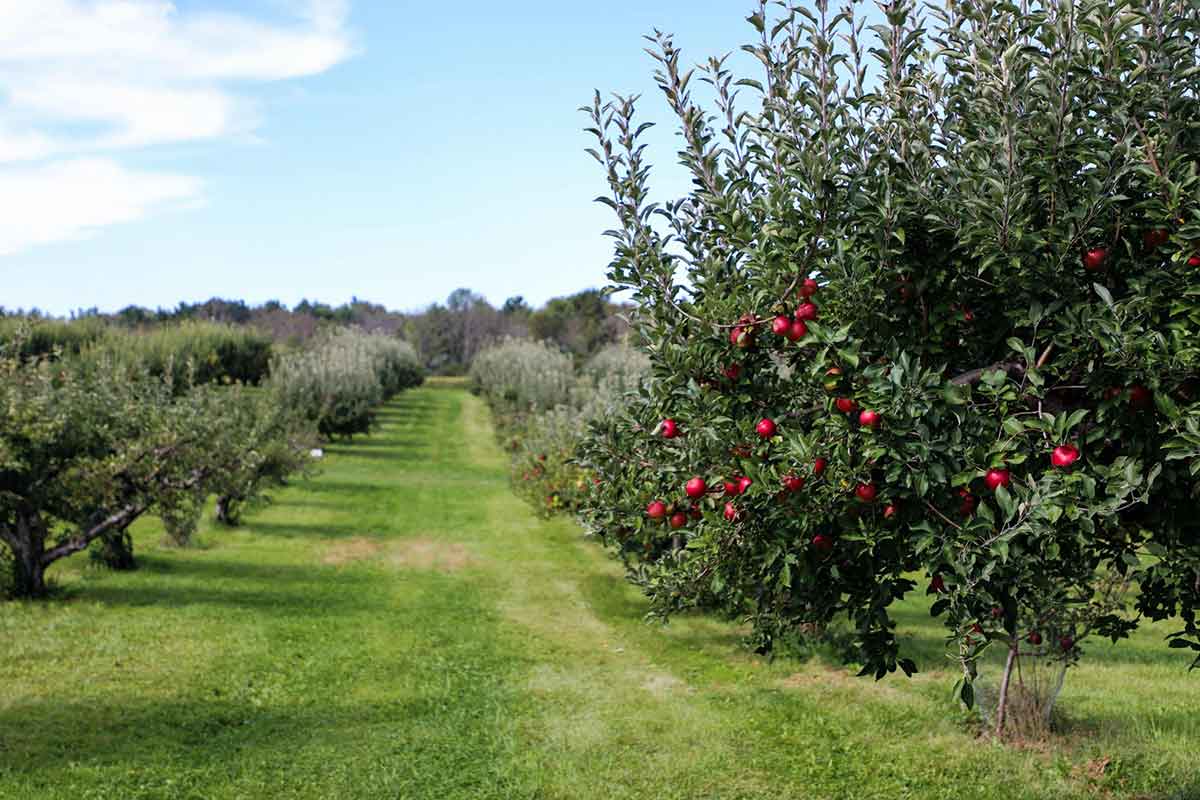Deere and company began in Rutland, Vermont USA when John Deere moved to Grand Detour, Illinois in 1836 to escape bankruptcy in Vermont. Deere was an established blacksmith and opened a shop in Grand Detour which allowed him to serve as a general repairman in the village, as well as a manufacturer of tools such as pitchforks and shovels. The item that changed his life was the self-scouring steel plough, which was pioneered in 1837 when John Deere fashioned a Scottish steel saw blade into a plough. Prior to Deere’s steel plough, most farmers used wooden ploughs which meant the soil got stuck, meaning they had to be cleaned frequently. The smooth sided steel plough solved this problem. The traditional way of doing business back then was to make items to order, which was very slow, so Deere decided to make multiple ploughs, one for a customer to view and the rest for customers to take straight away. Word of his production spread quickly.
In 1842, Deere entered a business partnership with Leonard Andrus and purchased land for the construction of a new, two-story factory along the Rock River in Illinois. This factory, named the “L. Andrus Plough Manufacturer”, produced about 100 ploughs in 1842 and around 400 ploughs during the next year. Deere’s partnership with Andrus ended in 1848, and Deere relocated to Moline, Illinois, to have access to the railroad and the Mississippi River. There, Deere formed a partnership with Robert Tate and John Gould and built a 1,440-square-foot (134 m2) factory the same year. Production rose quickly, and by 1849, the Deere, Tate & Gould Company was producing over 200 ploughs a month. A two-story addition to the plant was built, allowing further production.
In 1853 Deere bought out Tate and Gould and was joined in the business by his son Charles Deere. At this time the company was manufacturing a variety of farm equipment including Wagons, Corn planters and Cultivators. In 1857 the company reached almost 1120 implements being sold each month, but sadly this changed when a nationwide recession took its toll on the company. To avoid bankruptcy the company was reorganised, and Deere sold his interests in the business to his son-in-law Christopher Webber and his son Charles Deere who took on most of his fathers’ roles. John Deere served as president of the company until 1886, The company then reorganised again in 1868 when it incorporated as Deere & Company. While the company’s original stockholders were Charles Deere, Stephen Velie, George Vinton, and John Deere, Charles effectively ran the company. In 1869, Charles began to introduce marketing centres and independent retail dealers to advance the company’s sales nationwide. This same year, Deere & Company won “Best and Greatest Display of Plough’s in Variety” at the 17th Annual Illinois State Fair, for which it won $10 and a Silver Medal. The main focus remained on farming, but John Deere did make a few bicycles in the 1890’s.
Increased competition during the early 1900s from the new International Harvester Company led the company to expand its offerings in the implement business, but the production of gasoline tractors came to define Deere & Company’s operations during the 20th century.
The company produced its first combine harvester, the John Deere No. 2, in 1927. A year later, this innovation was followed up by the introduction of John Deere No. 1, a smaller machine that was more popular with customers. By 1929, the No. 1 and No. 2 were replaced by newer, lighter-weight harvesters. In the 1930s, John Deere and other farm equipment manufacturers began developing hillside harvesting technology.
During World War II, the great-grandson of John Deere, Charles Deere Wiman, was president of the company, but he accepted a commission as a colonel in the U.S. Army. A replacement was hired and before returning to work at the company in late 1944, Wiman directed the farm machinery and equipment division of the War Production Board. In addition to farm machinery, John Deere manufactured military tractors, and transmissions for the M3 tank. They also made aircraft parts, ammunition, and mobile laundry units to support the war effort.
In 1947, John Deere introduced its first self-propelled combine, the model 55. It was soon followed by the smaller models 40 and 45, the larger model 95, and an even larger model 105 was introduced in the 1960s. In the mid-1950s, Deere introduced attachable corn heads, allowing crop producers to cut, shell, and clean corn in one smooth operation.
In 1956, Deere & Company bought-out the German tractor manufacturer, Heinrich Lanz AG. In the last months of 1958, John Deere constructed a factory in northern Rosario, Argentina. In Argentina, the make was managed by Agar Cross & Co. John Deere made in Argentina the following models of tractors: 445,730, the models of the series 20 like 1420, 2420, 3420, 4420; the models of the series 30 like 2330, 2530, 2730, 3330, 3530, 4530; the models of the series 40 like 2140, 3140 / 3140 DT, 3440, 3540 and the last made in Baigorria of the series 50 like 2850, 3350, 3550 until 1994. Seventeen years later, (in 2011) the Argentinian plant returns, and starts on assembly of tractors with the following models: 5036C, 5045D (45 HP) Serie 5D, 5045E (45 HP) Serie 5E, 5065E (65 HP) Serie 5E, 5075E (75 HP) Serie 5E, 5425N (77 HP) Serie 5000, 5725 (92 HP) Serie 5025, 5725HC (92 HP) Serie 5025, 5090E, 5090EH, 5076EF, 6110J, 6130J, 6145J and 6165J.
Plus, in 2012, added in SKD/CKD format, the assembly of combine harvesters 9570 STS Series 70, 9470 STS, 9670 STS and 9770 STS.
In 1997, Deere celebrated 50 years of self-propelled combine production, and the 1997 models featured a 50th-anniversary decal. In 1998, the 9410, 9510, and 9610 were introduced. These were essentially the same machines, but with minor upgrades. Deere dealers offered ’10 series’ upgrades to owners of older 9000 series Maximizer combines. In 1999, Deere introduced the 50 series Maximiser combines. These machines featured significant cosmetic upgrades including a more streamlined appearance, improved ergonomics in the cab, PTO shaft-style header hook-up, and the larger models were available as rotary machines which were a complete departure from the combines that Deere had built in the past.
As of 2018, Deere & Company employed about 67,000 people worldwide, of which half are in the United States and Canada, and is the largest agriculture machinery company in the world. In 2016 the company also started experiments with an electric farm tractor.
The logo of the leaping deer has been used by this company for over 155 years. Over the years, the logo has had minor changes and pieces removed. Some of the older style logos have the deer leaping over a log. The company uses different logo colours for agricultural vs. construction products. The company’s agricultural products are identifiable by a distinctive shade of green paint, with the inside border being yellow. While the construction products are identifiable by a shade of black with the deer being yellow, and the inside border also being yellow.








